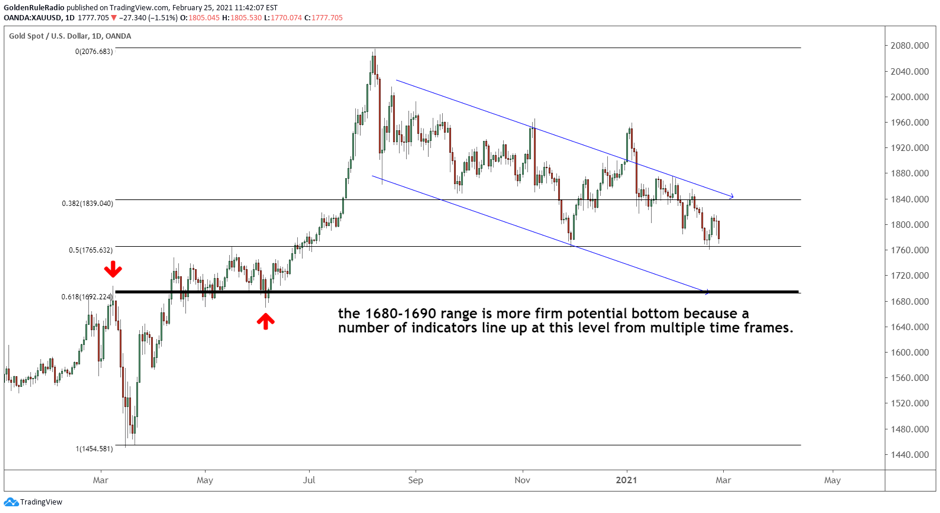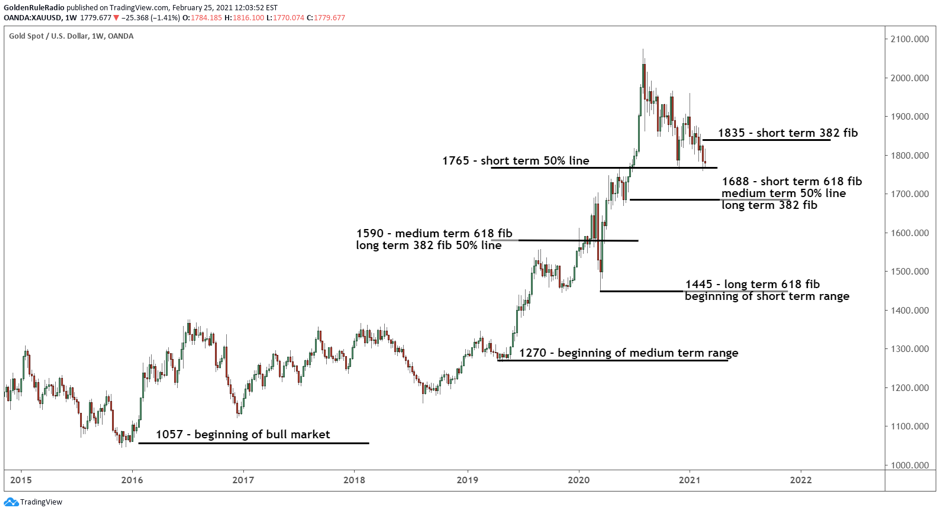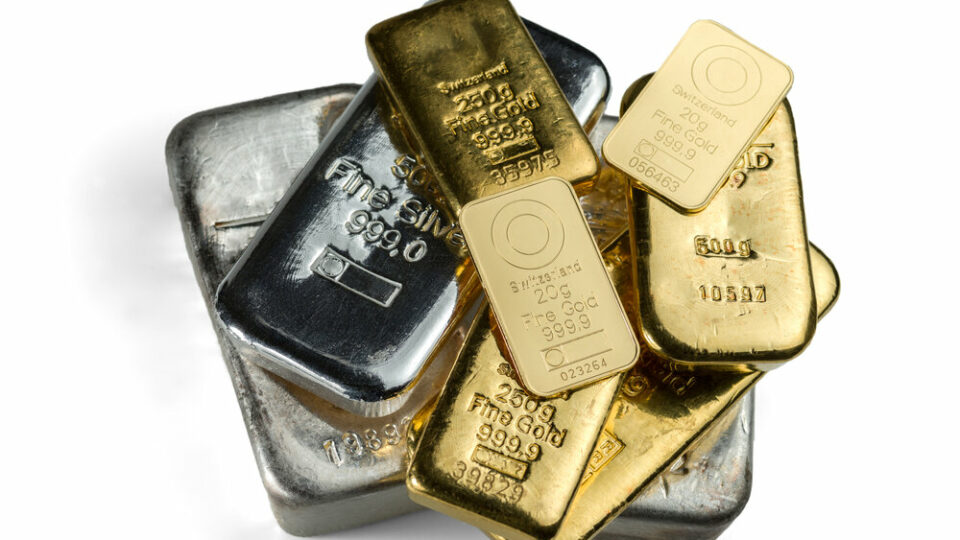The new commodities supercycle is combining with a recessionary economy. What does this mean for gold?
Gold can’t find the floor
Gold hit a double bottom this week at the 50% correction line around $1,762, but the technicals indicate we still have further to drop. Until gold starts putting in higher highs and higher lows, we are not calling a bull market transition.
Gold bulls are looking for the key support level that provides a more solid foundation for the gold price. Early this year, gold broke above the declining trendline after bouncing off the 50% correction line. This week, the price bounced off the 50% correction line again, but this time the technical signals are not pointing to a turnaround. We will likely see the price continue to drop until a more solid support level is reached. The $1,680 to $1,690 range has the potential to act as a stronger price floor, based on previous patterns in 2020.
We do not know how low this short-term bear market will take gold. Either way, it is providing ample buying opportunities.

Gold’s 6-year bull market
Let’s step back and look at gold’s performance since 2015, which marked the beginning of gold’s third great bull market. The key support and resistance levels shown in the chart above are based on the 2020 price movement. However, there are many other key levels in this 5-year bull market that give greater clarity on gold’s long-term trends (shown below).

History repeats itself
As long as the U.S. government is printing and spending more money than they are bringing in, gold will perform well. The more money we create, the less each Dollar is worth.
A hundred years ago, you could walk into a Ford dealership and buy a brand-new automobile for 30 $20.00 bills or 30 $20.00 gold pieces. $20 bills and 1-ounce coins were the same thing. Today, you can still buy the Ford automobile with 30 $20.00 gold pieces, but you can hardly buy 2 tires with 30 $20.00 bills. Gold is capital that perpetually maintains its purchasing power.
The world has entered a dangerous economic environment. We are seeing prices rise rapidly across the board, but employment is still very low. Commodities such as copper, tin, lumber, and crude oil are all showing signs of the commodity supercycle, yet we are still in the middle of a recessionary economy. Gold and silver are financial commodities that will rise along with other commodities.
The 1970s were one of the most inflationary periods in American history. Our current economic situation reflects the 70’s, where prices were rising rapidly but wages were not keeping up and jobs were scarce. The Federal Reserve does have methods to keep hyperinflation in check (such as raising short-term interest rates), but these tools could have a negative impact on the broader economy.
The Dollar drop
The U.S. Dollar index recently touched the declining trendline after a tiny rally, quickly reversing and resuming its downward trend toward its 2017 lows. Any major Dollar rally would be shocking, considering the United States’ ultra-loose monetary policy. No one would be surprised to see the Dollar Index travel down to 80 or beyond.

How should I react?
An inflationary environment requires a different mindset toward value. Fiat currency quickly deteriorates over time, so valuing anything in terms of a fiat currency can be extremely misleading. Gold is different. Instead of asking yourself “how many U.S. Dollars am I worth?” ask yourself “how much am I worth in terms of gold ounces?” This mindset creates a deeper understanding of the true nature of money, helping investors protect their wealth in the long run.
Gold is the universal language of money. Owning some physical gold is an essential part of building a stable foundation of wealth. The problem is, gold is usually very expensive and difficult to obtain. Vaulted fixed this problem by cutting out 70% of the supply chain, which means we can deliver the best prices every time. Opening a Vaulted account takes five minutes and gives you access to physical, allocated gold 24/7. It’s that easy to start building your financial future.











